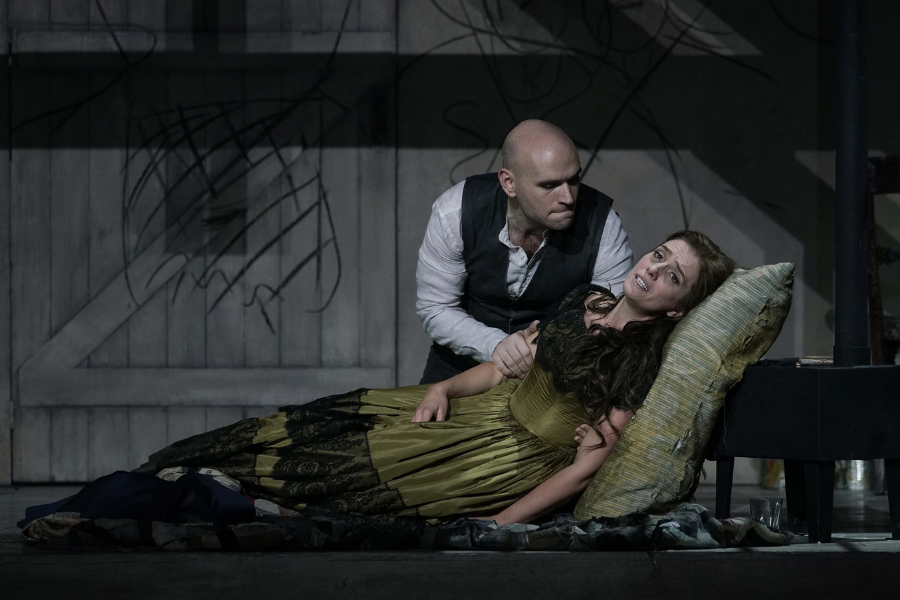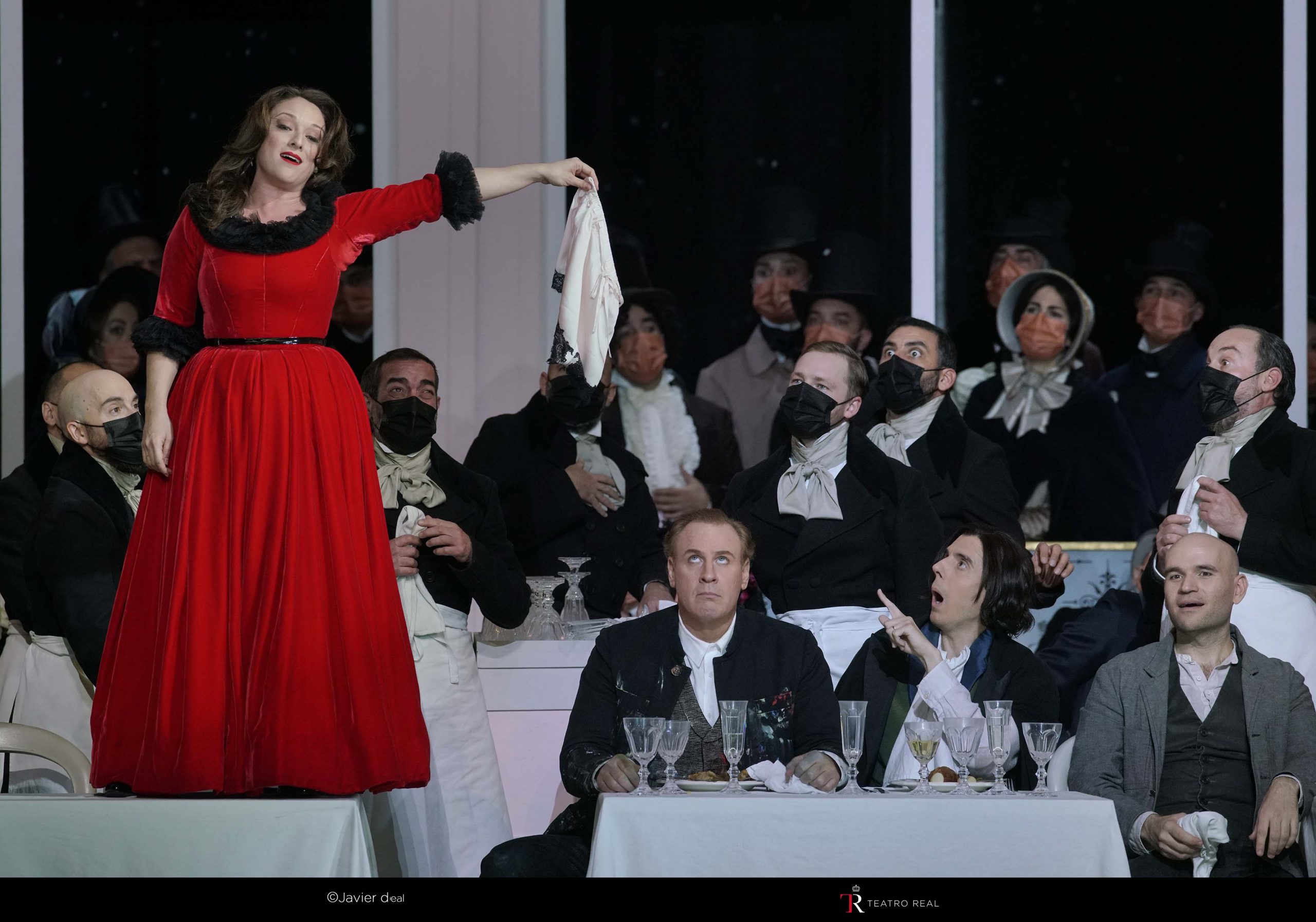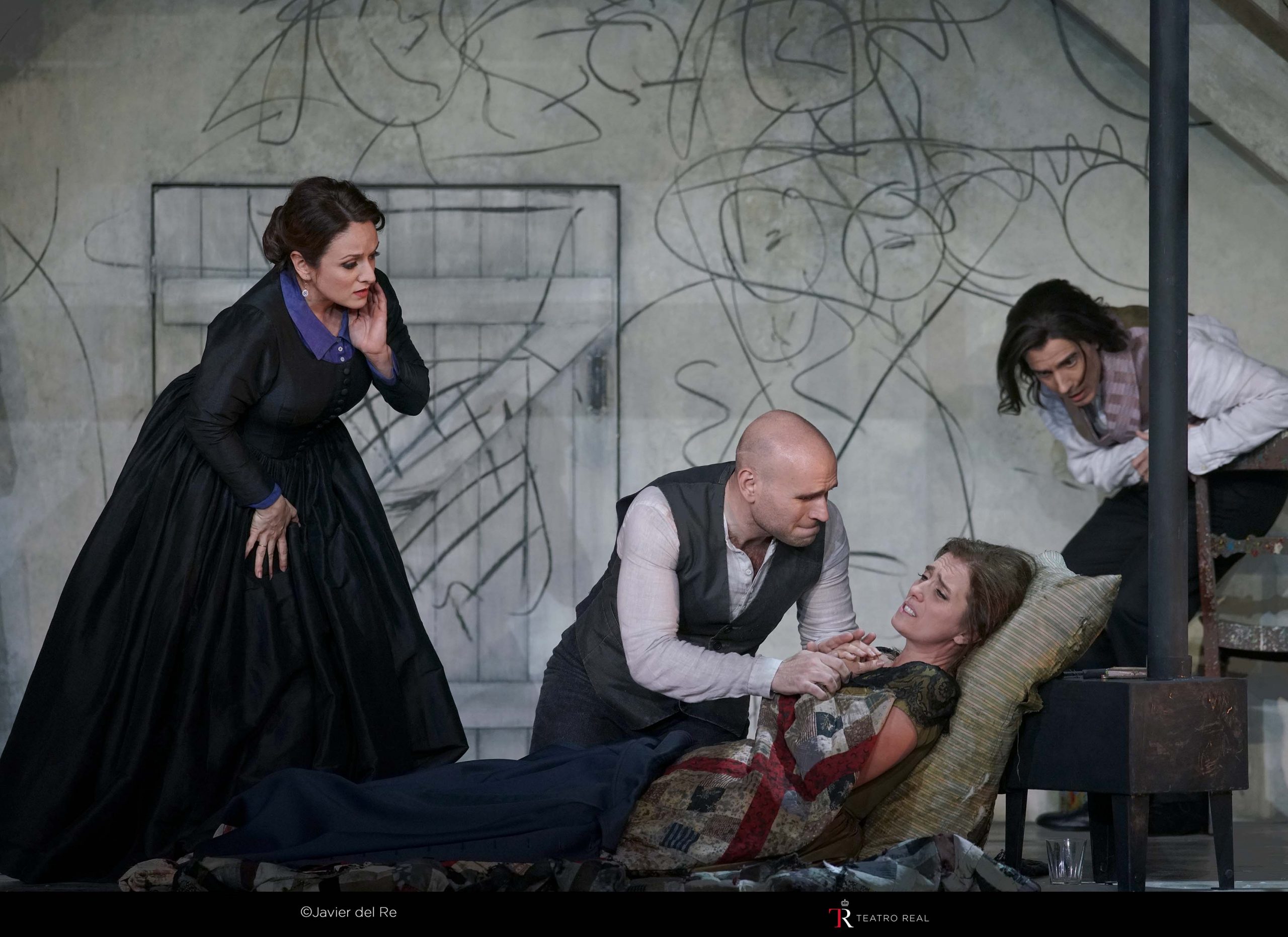Flashes of youthful memory: the Royal Theater will offer 15 performances of “La bohème”

La bohème, which will be on stage between December 12 and January 4, will arrive at the Royal Theater in a co-production with the Royal Opera House in London and the Lyric Opera in Chicago, which could already be seen on its stage in 2017.
The prestigious British theater director Richard Jones places the viewer in a privileged place, simultaneously watching a performance of the opera from the backstage and sitting in his armchair in the hall.
The musical direction will be carried out by Nicola Luisotti, principal guest conductor of the Teatro Real, who will conduct his tenth title at the head of the Titulares del Teatro Real Choir and Orchestra and the third opera by Puccini, after the success of Turandot (2018) and Tosca (2021).
Luis Miguel Méndez will direct the functions on December 30 and January 3.
Two casts will give life to this popular choral opera, in which stand out, in the main roles, the sopranos Ermonela Jaho and Eleonora Buratto (Mimì), the tenors Michael Fabiano and Andeka Gorrotxategi (Rodolfo) and the sopranos Ruth Iniesta and Raquel Lojendio ( Musetta).
Various activities have been organized around La bohème at the Royal Theater, highlighting, on December 19, two performances of ¡Todos a la Gayarre !, at 12.00 and 17.00.
Between December 12 and January 4, the Royal Theater will offer 15 performances of La bohème, by Giacomo Puccini, in a co-production of the Royal Theater with the Royal Opera House in London and the Lyric Opera of Chicago, which was presented on its stage in 2017.
The genesis of La bohème, and also the development of his entire creative process up to the premiere of the opera at the Teatro Regio in Turin on February 1, 1896, are meticulously documented thanks to the abundant correspondence between Giacomo Puccini, his editor and mentor. Giulio Ricordi, and the librettists Giuseppe Giacosa and Luigi Illica, who began their stormy and fruitful collaboration on this opera, later writing the librettos for Tosca and Madama Butterfly.
Starting from the book Scenes of Bohemian Life, by Henri Murger (1822-1861), born as a series of autobiographical stories published in the form of a serial, the two librettists, always jealously directed by Puccini, built a choral libretto, in which four young bohemians – a writer (Rodolfo), a painter (Marcello), a musician (Schaunard) and a philosopher (Colline) – overcome economic difficulties and inclement weather with humor and enthusiasm, seeking their place in an effervescent, bustling Paris and wintry.
The tragic love story between one of them, Rodolfo, an aspiring poet, and the tailor Mimì, whose inexorable death from tuberculosis surprises them, articulates a kind of initiatory path that dismisses the debauchery and dreams of youth and reveals life real, with all its forcefulness and significance.
With his brilliant orchestral palette, his mastery of prosody and his enormous dramatic talent, Puccini builds the personality of young people with his characteristic ability to articulate the most anecdotal and fun flashes of everyday life with the deepest, most passionate and captivating feelings. Thus, he intertwines his short phrases “of conversation” with others of enormous melodic and dramatic breath. Its orchestration suggests, with enormous timbral efficacy, from details as trifling as the twisting of flames or the tinkling of coins, to the almost cinematic ‘settings’ of the soulless attic, the bustle of Christmas Paris or the loneliness and deprivation of poverty.
The evocation of past moments, as if they were flashes that the memory revives and updates, is masterfully recreated with the use of musical motifs associated with emotions, feelings, or even objects to which Puccini grants enormous symbolic power, such as the candle of Mimì, the pink cap that Rodolfo buys for her, Colline’s coat, or the muff that warms the protagonist’s cold hands on her deathbed.
It is these moments that come and return with the memory, that are hidden and appear with the experiences that add up and build the path of life, which form the backbone of the production of La bohème that can be seen at the Teatro Real.
In their dramaturgical proposal, the prestigious British director Richard Jones and the set designer and costume designer Stewart Laing present the opera as a succession of Scenes from Bohemian life presented to the viewer without hiding the backstage work normally carried out by technicians behind the scenes. Thus, the public sees how the sets are changed, how different devices are used to achieve theatrical effects and how scenographic elements are piled up in the backstage, as if they were scraps of life crammed into memory.
Placing himself in a privileged place, the viewer permanently contemplates the past and present of the characters, unable to immerse himself in the cold and effervescent Paris of the young bohemians because he will always see it represented on stage.
But this artifice of the ‘theater within the theater’, in which real and theatrical time, the space of the public and the artist, the drama of the opera and its metaphors are confused, will lead the viewer to a richer interpretation of the work. by Puccini, enhanced by his vision from different angles, but also with his reflections.
Two casts will give life to this popular choral opera, in which stand out, in the main roles, the sopranos Ermonela Jaho and Eleonora Buratto (Mimì) and the tenors Michael Fabiano and Andeka Gorrotxategi (Rodolfo), seconded by the sopranos Ruth Iniesta and Raquel Lojendio (Musetta); the baritones Joan Martín-Royo and Manel Esteve (Schaunard), the tenors Vicenç Esteve and Pablo García López (Benoît); the baritones Lucas Meachem and Andrzej Filonczyk (Marcello); and the basses Krzysztof Baczyk and Solomon Howard (Colline) and Roberto Accurso (Alcindoro).
The musical direction will be carried out by Nicola Luisotti, with the exception of December 30 and January 3, when the opera will be directed by Luis Miguel Méndez.
La bohème will be the tenth title that Nicola Luisotti will direct at the Teatro Real, after Il trovatore (2007), La damnation de Faust (2009), Rigoletto (2015), Aida and Turandot (2018), Don Carlo (2019), La traviata and Un ballo in maschera (2020) and Tosca (2021).
In addition to the Titular Choir of the Teatro Real, directed by Andrés Máspero, the children’s choir Pequeños Cantores de JORCAM, prepared by Ana González, participates in the production.
La Bohème returns to the Teatro Real at Christmas time, bringing to its stage the joy, complicity and dreams of four young people who meet real life, paradoxically, meeting death.







